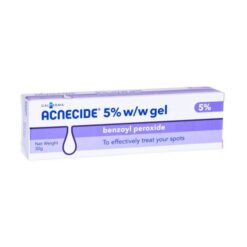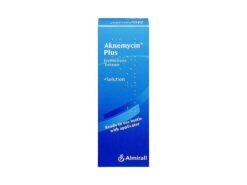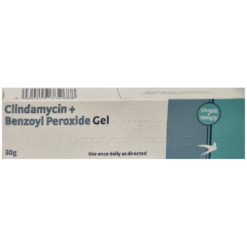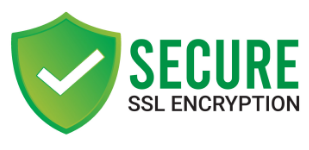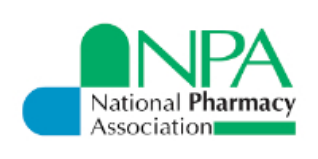-
NHS
-
Oldham Services
-
Shop
-
Help & Advice
Acne affects millions of people, impacting not just their appearance but also their emotional well-being. If you’re one of them, you might be searching for a solution, and one option that works well for our patients is lymecycline for acne. But before you consider taking any medication, it’s crucial to understand what it is, how it works, and whether it’s the right choice for you, as everyone’s skin is different. So we have put together this comprehensive guide to lymecycline, covering everything from its benefits and risks to who should and shouldn’t use it.
Lymecycline is an antibiotic medication that falls under the tetracycline family. This family of antibiotics is well-known for its broad-spectrum effectiveness against various bacterial infections, including those that cause acne.
Acne vulgaris, the most common form of acne, affects your skin when hair follicles become clogged with excess oil and dead skin cells. This creates an environment where bacteria can thrive, leading to inflammation and the formation of lesions like pimples, blackheads, and cysts.
Acne-causing bacteria can overrun your skin, leading to breakouts. Lymecycline operates by targeting these bacteria, effectively reducing their numbers. It also has anti-inflammatory properties, which help to calm red, swollen acne spots.
In addition to its effectiveness at treating acne, lymecycline is often chosen by healthcare professionals due to its favourable safety profile and reduced likelihood of causing antibiotic resistance when compared to other tetracyclines. It is important to note that lymecycline is a prescription-only medication, so you’ll need to consult with a doctor, pharmacist or dermatologist to determine if it’s the right acne treatment option for you.
When using Lymecycline for acne, you should take each capsule with a full glass of water to ensure proper absorption. It is best to take the medication at the same time each day to maintain consistent levels of the drug in your body. It’s advised not to lie down for at least 30 minutes after taking the capsule to avoid any potential irritation in the oesophagus.
During the treatment, monitor your progress and communicate any concerns or side effects to your healthcare professional. They may adjust your dosage based on your response to the medication or recommend alternative treatment options if necessary.
Several clinical studies back the use of lymecycline for acne treatment. These studies have often compared lymecycline favourably to other antibiotics and even some topical treatments. The effectiveness of lymecycline is one of its strongest selling points, making it a popular choice for the NHS for treating moderate to severe acne. When combined with a topical agent like Differin gel 0.1%, it shows a significant reduction in acne lesions and overall improvement compared to using lymecycline alone.
When it comes to acne, we all want quick results. While lymecycline isn’t an overnight cure, most people start to see improvements within 2-4 weeks of consistent use. However, the speed of results can also depend on other factors like your skincare routine, diet, and overall health. Make sure to continue treatment for at least 8 weeks before considering changing your course of action. Additionally, the combination therapy leads to faster results, which can be important for your confidence and well-being.
While the primary aim is to treat acne, some people find that lymecycline also improves the overall texture and tone of their skin. This is an added benefit that, although not guaranteed, is a welcome bonus for many users.
While lymecycline is generally well-tolerated, it’s important to be aware of potential side effects. Some of the most common ones include:
Although rare, there are some serious side effects associated with lymecycline that require immediate medical attention. These include:
When using Lymecycline for acne, it is important to be aware of potential interactions with other medications. As with any medication, always consult your healthcare professional before combining Lymecycline with other drugs.
Lymecycline, being part of the tetracycline antibiotic family, may interact with certain medications, leading to decreased effectiveness or increased side effects. Some examples of medications that can interact with Lymecycline include:
There may be other medications that can interact with Lymecycline. It is essential to disclose all your current medications, including prescription drugs, over-the-counter products, and dietary supplements, to your healthcare provider to prevent any adverse reactions.
Lymecycline is particularly effective for those dealing with inflammatory acne, which is characterized by red, swollen bumps. It’s generally prescribed for adults and teenagers, making it a versatile option for a wide age range. If you’re struggling with persistent, moderate to severe acne, lymecycline could be a suitable treatment for you.
Not everyone is an ideal candidate for lymecycline. Lymecycline should not be taken by pregnant or breastfeeding women due to potential risks to the unborn child. If you’re breastfeeding, consult your GP before starting lymecycline. People with liver or kidney issues should also exercise caution and consult your prescriber for personalised advice.
There are various different acne treatments that could be better suited to you if you can’t take lymecycline.
To maximise the benefits of lymecycline, it’s crucial to use it correctly. Lymecycline capsules and tablets should be taken once a day. However, one common mistake is taking the medication on an empty stomach, which can lead to nausea. To avoid this, always take lymecycline with a meal. Additionally, even if your acne starts to clear up, it’s essential to complete the entire course of the medication. This helps to prevent bacterial resistance, ensuring that the treatment remains effective.
Storing lymecycline correctly is just as important as taking it correctly. Keep the medication in a cool, dry place away from direct sunlight to maintain its effectiveness. Always check the expiry date before taking any medication. Using expired lymecycline can be risky and should be avoided. Dispose of expired medication properly.
If Lymecycline is not the most suitable treatment option for you, there are alternatives available to manage your acne effectively. Some commonly prescribed alternatives include:
It is crucial to discuss your options with a GP or pharmacist before deciding on the best treatment approach for your acne. Consider your skin type, the severity of your acne, and any potential side effects when evaluating alternative treatments. Our online acne clinic can give you advice on what you may need to treat your acne.
In addition to Lymecycline, consider incorporating a topical retinoid into your skincare routine. Retinoids can help clear your acne by unclogging pores and reducing inflammation. Apply a pea-sized amount to the affected areas every other day, preferably in the evening. Retinoids can dry and irritate the skin, and overdrying your skin can stimulate more oil production, making your acne even worse. Consult a dermatologist or pharmacist before implementing retinoids into your skincare routine.
Adjusting your skincare routine is a crucial step in managing acne. Keep your face clean by washing it with a gentle cleanser twice a day. Avoid scrubbing or using harsh exfoliants, as this can irritate your skin and worsen acne. Be cautious with skincare products and makeup that contain added fragrances, as these can provoke breakouts. Opt for non-comedogenic products that do not clog the pores.
Ready to take the next step in your acne treatment journey? Click2Pharmacy is a regulated online UK-based pharmacy which has its own online acne treatment clinic. We can help you find the right treatment whilst offering 100% confidentiality with the best online prices. Complete our online assessment to buy lymecycline online and start your path to clearer skin.
No, a prescription is required. This ensures that the prescriber evaluates your condition and prescribes the medication appropriately.
Generally, most people start to see improvements within 2-4 weeks. However, the full benefits may take longer to become apparent. Continue the course of treatment for at least 8 weeks before you consider stopping lymecycline for your acne treatment.
It’s not advisable, as alcohol can interfere with the medication’s effectiveness and potentially exacerbate side effects.
Yes, Lymecycline is a broad-spectrum antibiotic which is effective against a variety of bacterial infections. It’s not only used to treat acne but also other infections such as respiratory tract infections, urinary tract infections, and some sexually transmitted infections.
If you miss a dose, take it as soon as you remember. However, if it’s close to the time for your next dose, skip the missed dose and continue with your regular schedule. Never take a double dose to make up for a missed one.
There’s a possibility that acne may reappear after stopping Lymecycline treatment. This is because Lymecycline helps suppress acne-causing bacteria but does not cure the underlying causes of acne. To maintain clear skin after stopping Lymecycline, it’s essential to maintain a consistent skincare routine and follow a healthy lifestyle. If your acne reappears, it’s advisable to consult your healthcare professional for further guidance and treatment options.
